We have in our hands the most powerful Xiaomi smartphone released to date, the Xiaomi 13 Ultra. It comes with the best that the Chinese manufacturer has to offer, including a large and powerful sensor, cutting-edge hardware with ample memory, an advanced display, and a distinctive design created in partnership with the lens manufacturer Leica. Could this be the best smartphone of 2023?
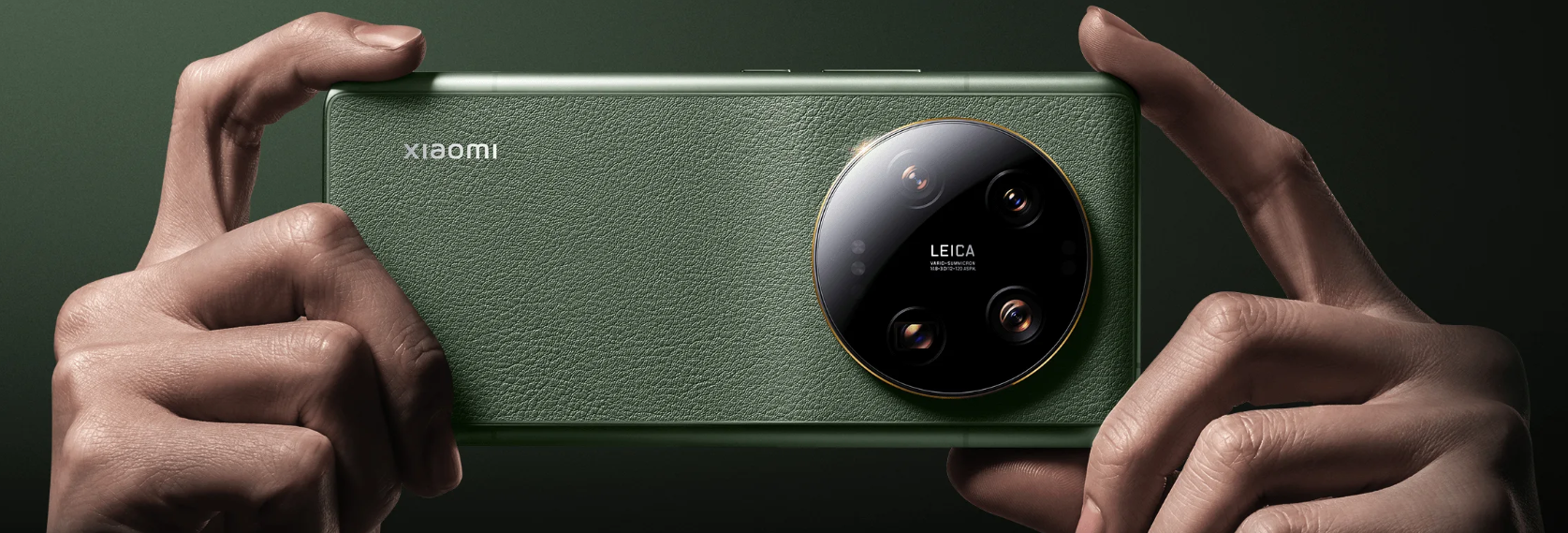
Accessories:
The Xiaomi 13 Ultra comes in a dark package and includes some accessories:
- 90W charger
- USB-C cable
- User manual
- Black plastic case
- SIM card tray ejector tool
Design and Connectivity:
The Xiaomi 13 Ultra not only grabs attention with its impressive specifications but also with its design inspired by cameras. We have a metal device with a vegan leather-style back.
The circular camera module is larger than what we saw in the previous generation, and it protrudes significantly on the back. To give you an idea: the thickness of the Xiaomi 13 Ultra is 9.1 mm at its thinnest point, but where we have the glass circle, it measures more than 15 mm.
There is a raised portion at the top to prevent the camera module from protruding too much. This elevation results in a device with a unique grip compared to other smartphones, which typically have a uniform thickness around their edges.
The design of the camera module has changed due to the addition of a sensor. Now, we no longer have a camera in the center as before, but instead, we see the Leica name engraved. The one we tested is the standard black version, while there are also other options in green and white. In all of them, we have a golden ring surrounding the circular glass piece.
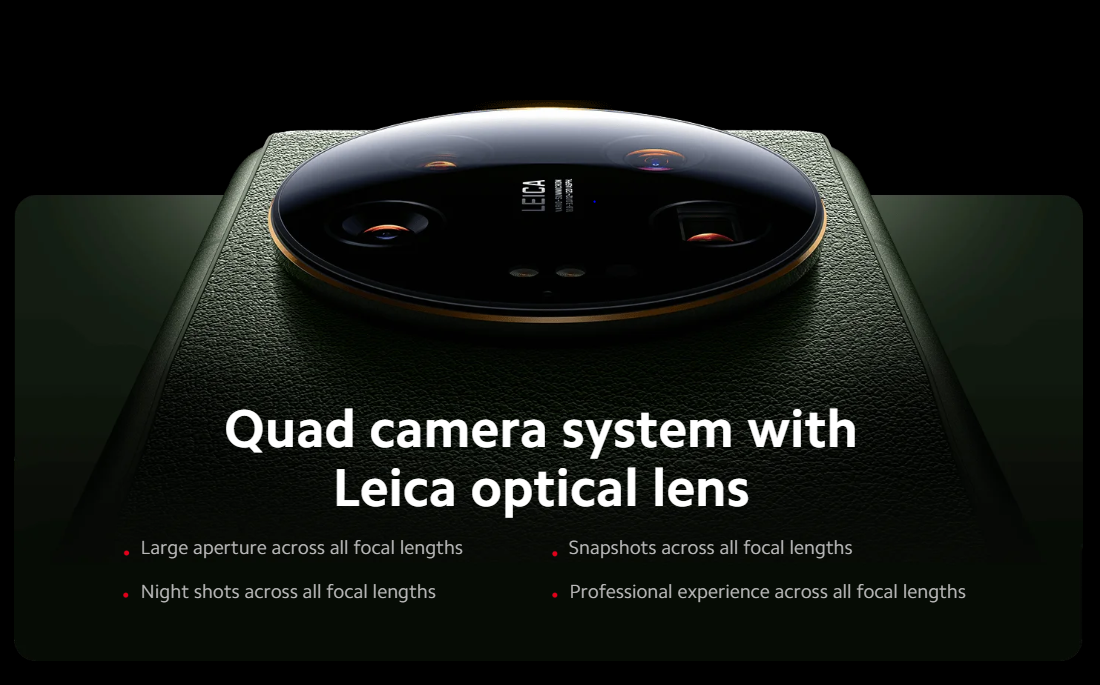
While some Xiaomi phones have flat sides, here we have a quite curved design. The metal part has a matte finish and matches the colour of the back of the device. In addition to excellent build quality, we also have IP68 certification for water and dust resistance, as well as Gorilla Glass Victus to protect the screen from scratches.
The biometric reader is incorporated into the display at an ideal position for a comfortable experience. It responds promptly and unlocks quickly, as expected from a flagship smartphone. We have the classic infrared emitter at the top, which is always present in Xiaomi devices. However, this device, like many others from the brand, omits the headphone jack and microSD card slot.
In terms of connectivity, we have seventh-generation Wi-Fi, Bluetooth 5.3, NFC, and 5G. The USB port is third generation and supports DisplayPort, allowing you to transfer 4K video at 60 Hz to a connected screen. This new connection ensures file transfer speeds to the PC that are up to 10 times faster than the previous generation.
Display and Sound:
The top Chinese smartphone features a large 6.73-inch OLED display with Quad HD+ resolution and a 120 Hz refresh rate. Xiaomi is concerned about visual fatigue caused by its device, and we have a display with minimal brightness flicker, making it more comfortable to use in dark environments for extended periods.
The screen may not have the brightest level in the segment, but it provides good visibility on sunny days. There is support for HDR10+ and Dolby Vision, ensuring complete compatibility with any type of video you watch on streaming services, which also helps to maximize the brightness and colours of the screen.
Speaking of colours, the Xiaomi 13 Ultra does not come with the best native calibration and tends towards oversaturated colours. The good news is that there are various settings to adjust to your liking, allowing you to get the image very close to reality. The refresh rate drops to 1 Hz in static content and fluctuates most of the time between 10 and 120 Hz to save battery.
Xiaomi’s most advanced smartphone features three sound outputs, as seen in other devices from the brand. In addition to the call speaker, which also serves as one of the audio channels, we also have two more outputs at each end of the phone.
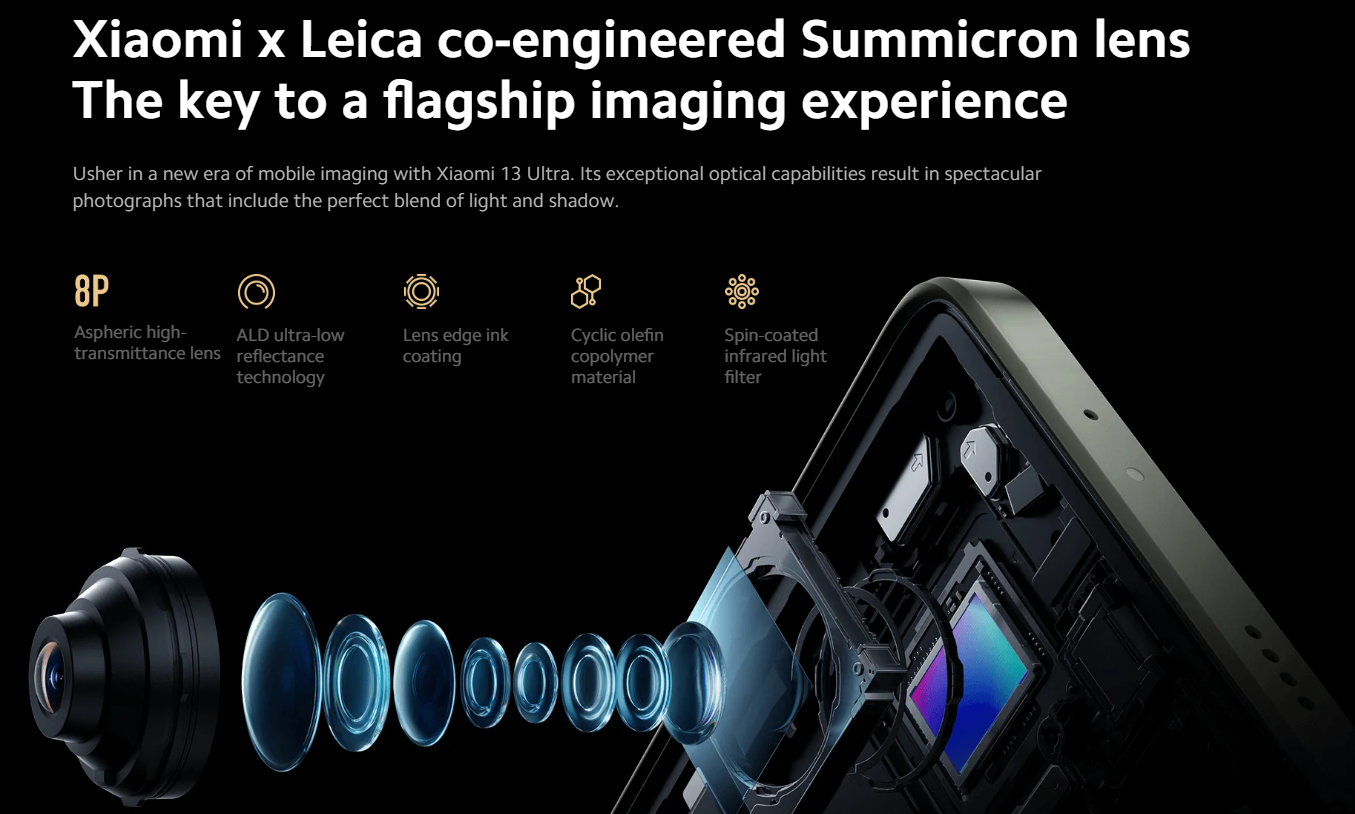
It doesn’t come with Harman/Kardon speakers, but it still supports Dolby Atmos for a more complete sound experience. The sound is powerful and delivers excellent quality with a good balance between bass, midrange, and treble.
Battery:
The battery has a capacity of 5,000 mAh, which represents a slight increase compared to the 4,860 mAh in the Xiaomi 12S Ultra. This increase, combined with the more efficient new hardware, has significantly improved battery life between generations, now exceeding 30 hours under moderate use.
This ensures that the Xiaomi 13 Ultra provides plenty of battery life for the entire day, even if you frequently play games. It also stands out in its segment and is above average.
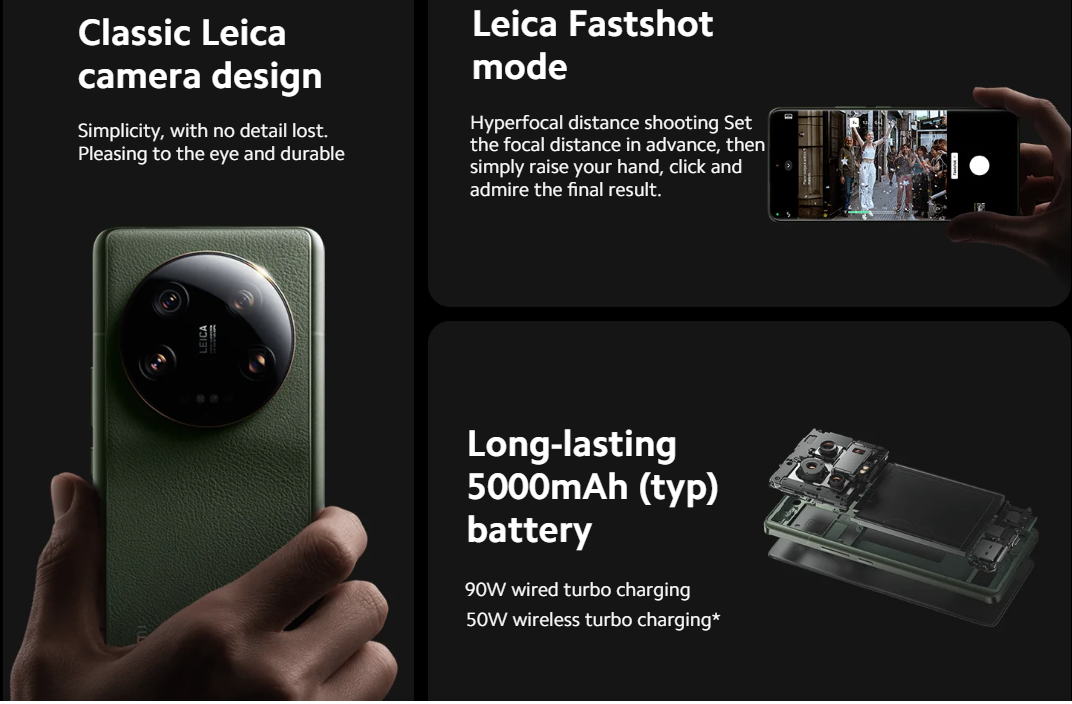
Another advantage of the Xiaomi flagship is its fast charging time. It may not be the fastest we’ve seen, but it ranks among the best. It comes with a 90W charger that fully charges the battery in 38 minutes and reaches 40% in just 15 minutes and 54% in half an hour when plugged in.
Cameras:
Xiaomi seems obsessed with 50 MP cameras, and in the 13 Ultra, we not only have one sensor but four with this resolution. The Sony IMX989 sensor was chosen in combination with a lens with a variable aperture that switches between f/1.9 and f/4.0. The former is more useful in low-light scenarios, while the latter ensures sharper photos in well-lit places, as well as superior depth of field. The eight-element lens has optical stabilization.
Although the other three cameras also have 50 MP, the sensor is different. In this case, we have the Sony IMX858. The secondary camera features an ultra-wide lens with a wide 122-degree field of view. The telephoto camera is divided into two units, one with a 3.2x optical zoom and another with up to 5x zoom. Both have optical stabilization.
The Xiaomi camera app has been modified by Leica and offers two image capture profiles, with the standard profile tending towards more saturated colours. It doesn’t interfere with the white balance, and the wide dynamic range ensures photos with balanced brightness and contrast regardless of the ambient light.
The Xiaomi 13 Ultra is not the only smartphone on the market with a 1-inch sensor, but its distinctive feature is the variable aperture. This adds versatility to the device, allowing you to capture more details up close with the larger focal aperture and achieve a greater background blur or use the smaller aperture for a wider image.
There’s a 50 MP mode to capture images at the sensor’s maximum resolution and bypass the standard compression. While other Xiaomi smartphones tend to capture sharper images at maximum resolution, the Xiaomi 13 Ultra does not offer this advantage, so it’s better to leave it in standard mode to save space.

The telephoto camera ensures quality photos when using optical zoom. It’s good to see that regardless of which camera you choose, you’ll have the same color tones and contrast as the primary camera. This means you can use different zoom levels without worrying about a loss in quality.
The same can be said for the ultra-wide camera, which maintains the same good balance of brightness, colours, and contrast as the other cameras. It’s common to see a considerable drop in sharpness when using the ultra-wide camera, but with the Xiaomi 13 Ultra, you won’t have to sacrifice quality when you want to capture a wider scene.
Background blurring can be achieved with the telephoto camera, and it handles backlighting well. The Xiaomi 13 Ultra also performs well in macro photography and doesn’t disappoint when taking photos at night. It delivers clean shots with good colours and contrast, demonstrating that the Chinese flagship has an efficient night mode.
Xiaomi also invests in a dedicated mode for capturing the moon, something that has become a standard feature in Huawei and Samsung smartphones. The difference between Xiaomi’s approach and that of its Korean rival is that here we have enhanced sharpness in post-processing, sacrificing contrast to make the photo less saturated and with a more natural appearance and cool colour tones.
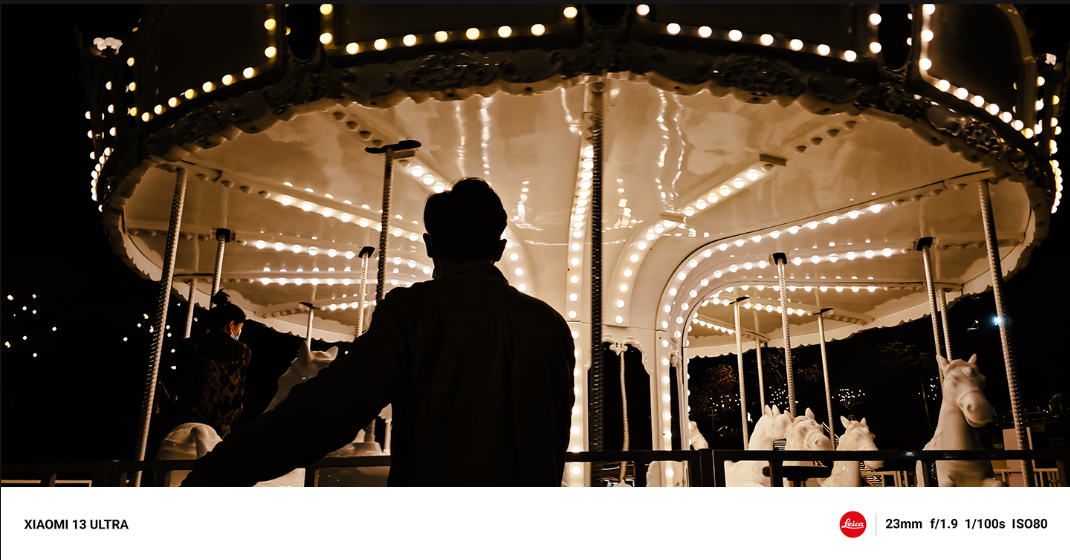
Super Moon Mode
The front camera features a 32 MP sensor from the previous generation but now comes with a wider aperture lens to help in low-light conditions. The overall quality of selfies is good, even in low-light captures. They may not be the sharpest selfies in the segment, but the results will please most users, especially when using background blur.
Selfies
You can record video in 8K at a maximum of 24 fps with the rear camera, while the front camera remains limited to Full HD resolution, as is standard for Xiaomi. Optical stabilization is quite efficient, handling shakes well, while focusing is fast, and sound capture is clear and well-defined. Front camera recordings can be quite dark at night but without excessive noise.
Software:
The Xiaomi 13 Ultra comes out of the box with Android 13 modified by MIUI 14. At the time of our testing, it had a security patch that was a few months old. At least Xiaomi promises three Android updates with security patches for five years.
The system is responsive, smooth, and responds promptly to every touch. We have the various features present in MIUI that are already known from other devices, enhancing customization while also providing useful extras such as a floating menu for quick shortcuts. There is also a heart rate sensor integrated into the biometric reader.
By default, the 13 Ultra reserves 3 GB of storage to expand RAM, even in the version with 16 GB of memory, which is completely unnecessary, and there is also an option to expand it up to 7 GB.
You can also read our writer’s best picks for Xiaomi
DETAILED REVIEW OF XIAOMI 12T PRO USABILITY, SPECS, AND FEATURES
XIAOMI REDMI PAD SE – FEATURES AND SPECIFICATIONS
Competitors:
The Xiaomi 13 Ultra proves to be an excellent flagship smartphone, but it doesn’t surpass its rivals in every aspect. The Galaxy S23 Ultra has a brighter display, faster performance, and a more advanced camera. Samsung also offers support for four Android updates with more frequent security patches.
The iPhone 14 Pro Max excels in display and performance but falls behind in battery life and charging time. Both smartphones compete well in terms of camera capabilities, with Xiaomi’s device excelling in the flexibility of the rear camera setup, and Apple’s offering better front-facing selfies.
Strengths and Weaknesses:
Strengths
- High-quality display and sound
- Good performance
- Long-lasting battery
- Fast charging
- Excellent cameras
Weaknesses
- Exotic design may not appeal to everyone
- Cost-effectiveness can be challenging when importing”





